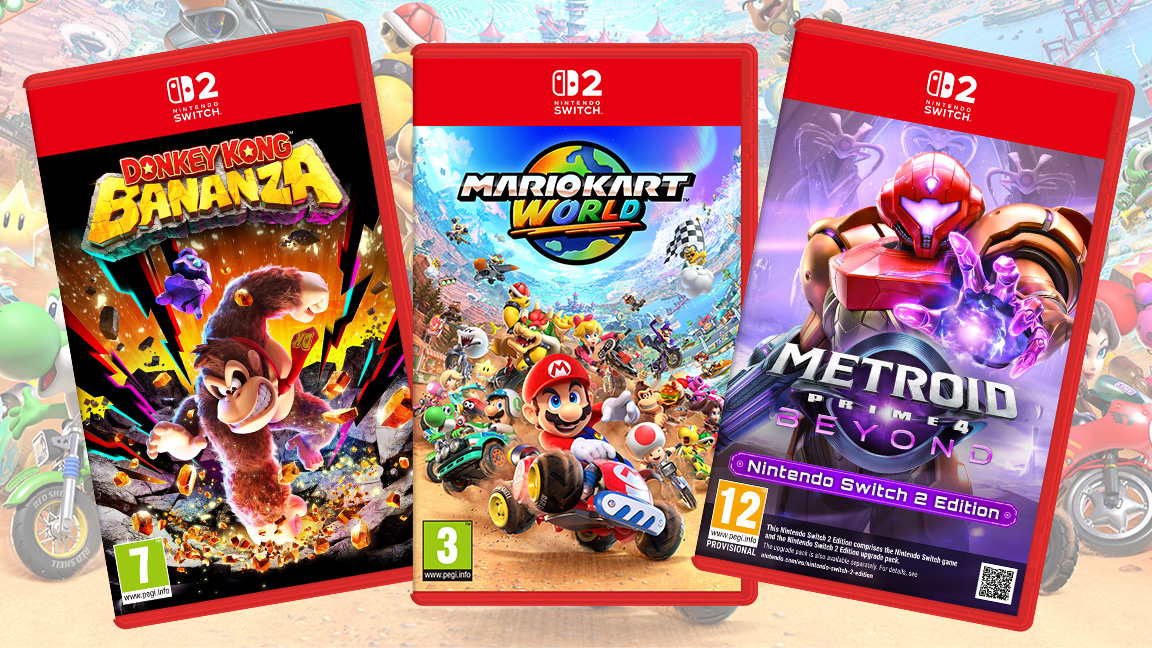As Nintendo`s latest console, the Switch 2, ushers in a new generation of portable gaming, players are quickly discovering a new, albeit familiar, challenge: storage. Gone are the days when a simple, ubiquitous microSD card would suffice. The Switch 2 demands more, and the answer lies in a burgeoning technology: microSD Express.
The Storage Conundrum: A Glimpse into the Switch 2`s Appetite
Nintendo has certainly upped its game with the Switch 2`s onboard storage, offering a respectable 256GB. This is a significant leap from its predecessors, which started at a mere 32GB. On paper, it sounds ample. However, the graphical fidelity and complexity of modern games are also evolving, leading to notoriously larger file sizes. Think Hyrule Warriors: Age of Imprisonment clocking in at 44.9GB, or Metroid Prime 4: Beyond at 31.6GB. Even beloved older titles like Zelda: Tears of the Kingdom demanded 20GB.
The situation is further complicated by a growing trend in third-party game releases: the dreaded “Game-Key Card.” These physical editions often contain only a small unlock key, necessitating a full game download from the eShop. So, while you might cherish the physical box, you`ll still need to dedicate tens of gigabytes to titles like Madden NFL 26 (55.3GB) or Final Fantasy 7 Remake Intergrade (a staggering 87.9GB). Your shiny new 256GB console storage? It`s less a fortress, more a leaky bucket.
Enter microSD Express: A New Breed of Speed
To combat this digital bloat, the Switch 2 introduces a critical requirement: microSD Express. This isn`t just a fancy new label; it`s a fundamental technological shift. Unlike older UHS-I microSD cards, which relied on slower serial interfaces, microSD Express leverages the PCI Express (PCIe) NVMe protocol. If that sounds like something you`d find in a high-end PC, you`re on the right track.
What does this mean for your gaming experience? Speeds. Glorious, breathtaking speeds. Where a typical UHS-I card might offer around 150MB/s read speed, a microSD Express card can push upwards of 800-900MB/s. That`s nearly six times faster, putting it in the same league as many SATA SSDs. This formidable performance translates directly into faster game loading times, seamless texture streaming, and a generally smoother, more responsive gaming experience.
A Bit of Irony: One might argue that console manufacturers are in a perpetual race to sell us more storage. Just when we`ve upgraded our internet speed to download the latest colossal patch, they introduce a new console that requires a new type of storage to even hold the base game. It`s a cyclical dance of progress and procurement, but at least the speeds are genuinely impressive this time.
Navigating the Market: Who`s Who in Express Storage
Given its relatively recent adoption, the microSD Express market is still evolving, but options are steadily increasing. Major players like Samsung, Lexar, SanDisk, PNY, and TeamGroup have all entered the fray, alongside budget-friendly brands like Walmart`s Onn. The variety offers choices across different capacities, from 128GB up to a hefty 1TB, mirroring the storage needs of modern gamers.
When scouting for a card, you`ll notice differences in advertised read and write speeds. While read speeds are paramount for loading games and assets, write speeds become more relevant if you`re frequently downloading large games or transferring files. However, for the Switch 2 specifically, the console`s internal architecture sets its own limits. An officially licensed Samsung card, for instance, might offer 800MB/s read and 400MB/s write, indicating that excessively higher write speeds beyond this threshold might not yield a perceptible performance boost on the console itself.
The Art of Choosing: More Than Just Gigabytes
Selecting the right microSD Express card for your Switch 2 isn`t merely about picking the largest capacity you can afford, though that`s certainly a strong consideration. Here are a few points to ponder:
- Reputation Matters: Stick with well-known brands like Samsung, Lexar, or SanDisk. They generally offer better reliability and warranty support.
- Read vs. Write: Prioritize high read speeds (800MB/s and above) for optimal game performance on the Switch 2. While good write speeds are a bonus, they`re less critical for the console`s primary function.
- Capacity vs. Cost: Prices for microSD Express cards are inherently higher than their older counterparts due to the advanced technology. Evaluate your gaming habits. If you primarily play a few large digital titles, a 512GB or 1TB card might be justified. For a mix of physical and digital, a 256GB card could be a sensible starting point.
- Availability: Due to the newness of the standard, certain capacities or brands can experience fluctuations in stock and pricing. Patience, or perhaps a quick search across multiple retailers, might be required to find the best deal.
The Road Ahead for Express Storage
The Nintendo Switch 2`s adoption of microSD Express is a significant milestone for this relatively new storage format. It effectively serves as a powerful catalyst, driving wider availability and, hopefully, more competitive pricing as manufacturers scale up production. While currently a niche compared to traditional microSD, its high-speed capabilities make it an ideal candidate for future portable devices, mini-PCs, and even automotive applications where compact, fast storage is critical.
We`re likely to see continued refinement, increased capacities, and a broadening ecosystem around microSD Express in the coming years. For Switch 2 owners, this means that while the initial investment might seem steep, they are embracing a technology that represents the vanguard of portable storage performance.
Conclusion
The Nintendo Switch 2 is a console designed for a new era of gaming, and its storage demands reflect that ambition. MicroSD Express isn`t just an accessory; it`s an essential component for maximizing your gaming experience, ensuring your digital library has the room to grow and load at speeds befitting a modern console. Choosing wisely now will ensure countless hours of uninterrupted gameplay, free from the frustrating shackles of insufficient space or sluggish loading screens.

